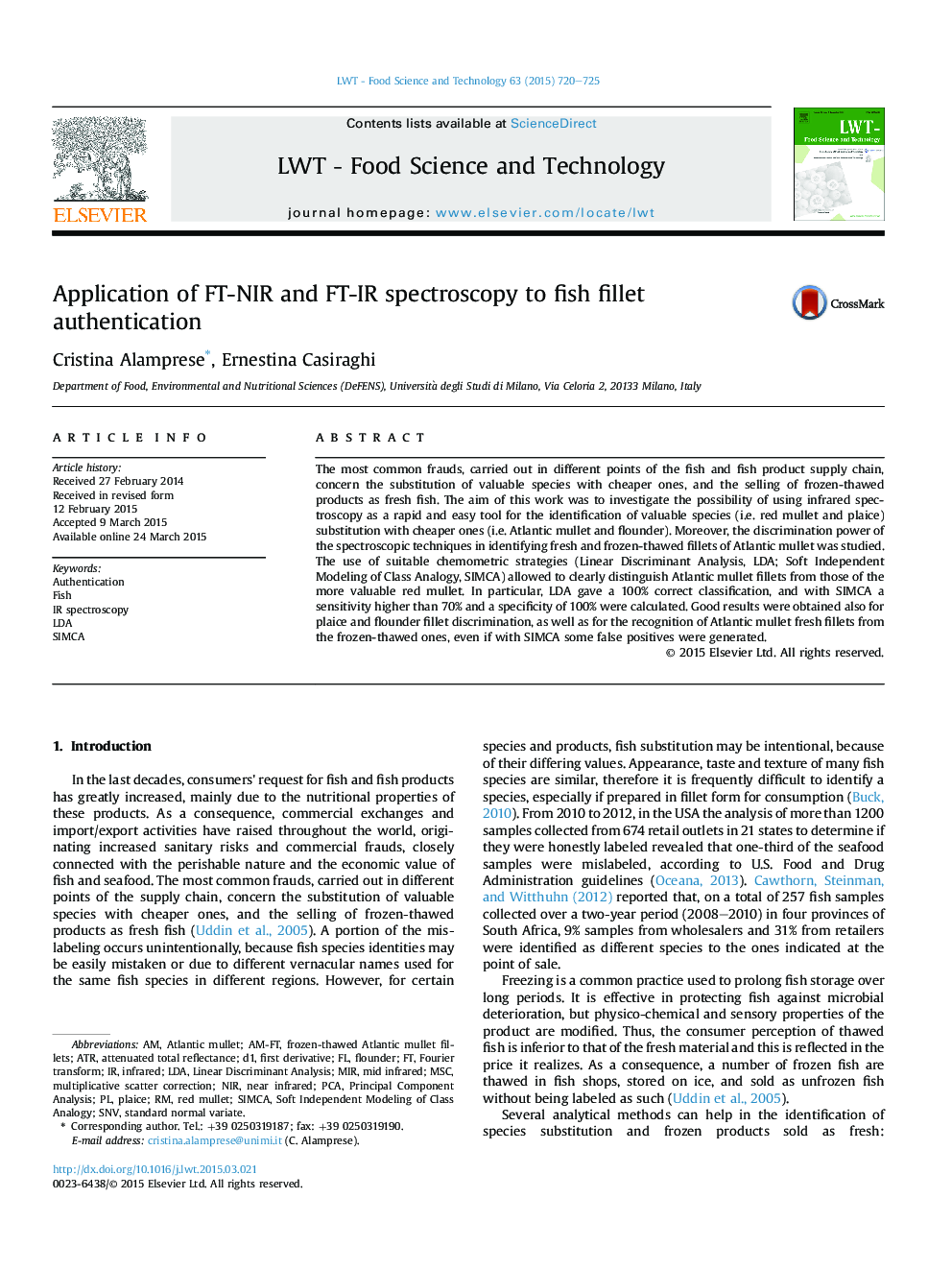| Article ID | Journal | Published Year | Pages | File Type |
|---|---|---|---|---|
| 6402212 | LWT - Food Science and Technology | 2015 | 6 Pages |
â¢Application of NIR and MIR spectroscopy to fish fillet authentication.â¢Use of two different classification approaches: LDA and SIMCA.â¢Discrimination of valuable fish species from the cheaper ones gave good results.â¢Recognition of fresh fillets from the frozen-thawed ones was possible.â¢NIR and MIR spectroscopy is a valid pre-screening tool in fish authentication.
The most common frauds, carried out in different points of the fish and fish product supply chain, concern the substitution of valuable species with cheaper ones, and the selling of frozen-thawed products as fresh fish. The aim of this work was to investigate the possibility of using infrared spectroscopy as a rapid and easy tool for the identification of valuable species (i.e. red mullet and plaice) substitution with cheaper ones (i.e. Atlantic mullet and flounder). Moreover, the discrimination power of the spectroscopic techniques in identifying fresh and frozen-thawed fillets of Atlantic mullet was studied. The use of suitable chemometric strategies (Linear Discriminant Analysis, LDA; Soft Independent Modeling of Class Analogy, SIMCA) allowed to clearly distinguish Atlantic mullet fillets from those of the more valuable red mullet. In particular, LDA gave a 100% correct classification, and with SIMCA a sensitivity higher than 70% and a specificity of 100% were calculated. Good results were obtained also for plaice and flounder fillet discrimination, as well as for the recognition of Atlantic mullet fresh fillets from the frozen-thawed ones, even if with SIMCA some false positives were generated.
